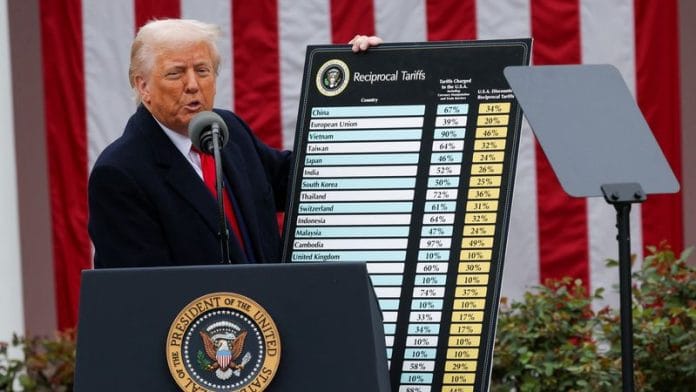Thank you dear subscribers, we are overwhelmed with your response.
Your Turn is a unique section from ThePrint featuring points of view from its subscribers. If you are a subscriber, have a point of view, please send it to us. If not, do subscribe here: https://theprint.in/subscribe/
I write this not as an economist, or as a public policy guru. Instead, this piece is a reminder of collateral consequences that many should be able to relate to. There are stalwarts who have commented on the inflationary impact, stock market rout and other serious implications following the US Govt’s announcement on tariff. Experts on either side are able to string together a series of logical outcomes that can almost convince you of the long-term impacts, as if you are experiencing reality. I am neither pro nor anti tariff but firmly believe that a play book of the past needs a contemporary edition to be of use. It’s also the time to remind ourselves of the sin of certainty.
Tariff as an indirect tax has been missing from our lexicon in most countries, and even in countries where tariffs/ import duties have been a significant source of tax revenue to the government, its importance has dwindled. Having started my career in India of 1980s, duties, countervailing duties, surcharges are not alien to me. In fact, management of these indirect taxes were a key lever of product cost management then. Audits and inspections unearthed many adverse findings and ‘raids’ and investigations were not uncommon. As I reflect on it, albeit through the lens of high tariff rates of 1980-1990s, I thought of putting some of these ‘collateral consequences’ together. Of course, they are by no means exhaustive :
- While tariffs were seen as a ‘protective measure’ for the local industries, its longevity was sustained more as a major source of govt revenues. In most of the countries with higher tariffs, the direct taxes or income tax contributed very little to the Govt exchequer (and not because the tax rates were lower) and hence the reliance on tariff.
- There is little evidence of protected industries becoming efficient and offering value for money
- There are many other non-tariff barriers that some countries still pursue; ranging from high local value-add content as a pre-requisite, failure to get product or service accreditation or even country of origin of the product. Indeed, a large buffet of barriers to choose from.
- Litigations and misrepresentations of the classification of goods to avoid higher duty rate were rampant.
- Split invoicing was often suspected, seldom established and ‘smuggling’ was a thing, not just for the contraband items. The Red channels at the airports remind us of the regulated era.
- Can’t exclude the possibility of under invoicing to lower the impact of import duty.
Yes, many of these could happen because back in those years, banking was less integrated, and it was difficult to connect cash/ fund movement with movement of goods and services. Now in the digitized world, it is certainly less opaque and therefore connecting the transactions only requires intent, a computer and access to the data. Of course, AI can help do the forensic faster and with precision now.
Manufacturing and supply chain have become very collaborative, just as cloud enabled collaborative tools have redefined services and software sectors. The old concept of ‘From’ and ‘To’ that was the basis for ‘Country of origin’ is impossible for value allocation, thus running the reality of differentiated tariffs into knots. And not just the final product, but even at the component level. Remember even the tiny chip is a mighty component of a product. Such duality colours the modern-day landscape. In other words, the seemingly simple to implement, import duty regime could lead to unintended imposts and therefore litigations. Instead, when I look at EU’s Carbon Border Adjustment Mechanism or the CBAM, that seems like a tariff that is contemporaneous with the current landscape. Yes, that’s a tariff too.
Also, in countries with fully convertible currencies, it would be difficult to establish if some of the old ‘collateral consequences’ would resurface in a different way. And while technology has made investigative forensics easier, it has also opened newer avenues that might lessen the impact of tariff in a seemingly legitimate way. Unless of course, the currency is made partly convertible or as is done in some of the countries, some cross border fund movements are subject to regulator’s approval. On the face of it, that might be an innocuous change, until you suddenly find your money not getting what you wish to procure, and barter might seem like a better option. Either way, the regulatory organisations will need to be beefed-up substantially to ensure compliance and even to avoid slowing down trade and commerce. And that’s a far cry from being lean and efficient. I am not an economist, but from an Operational Finance point of view it’s rather unhealthy, akin to feeling certain about what and where to start and leaving the endpoint to chance.
These pieces are being published as they have been received – they have not been edited/fact-checked by ThePrint.


